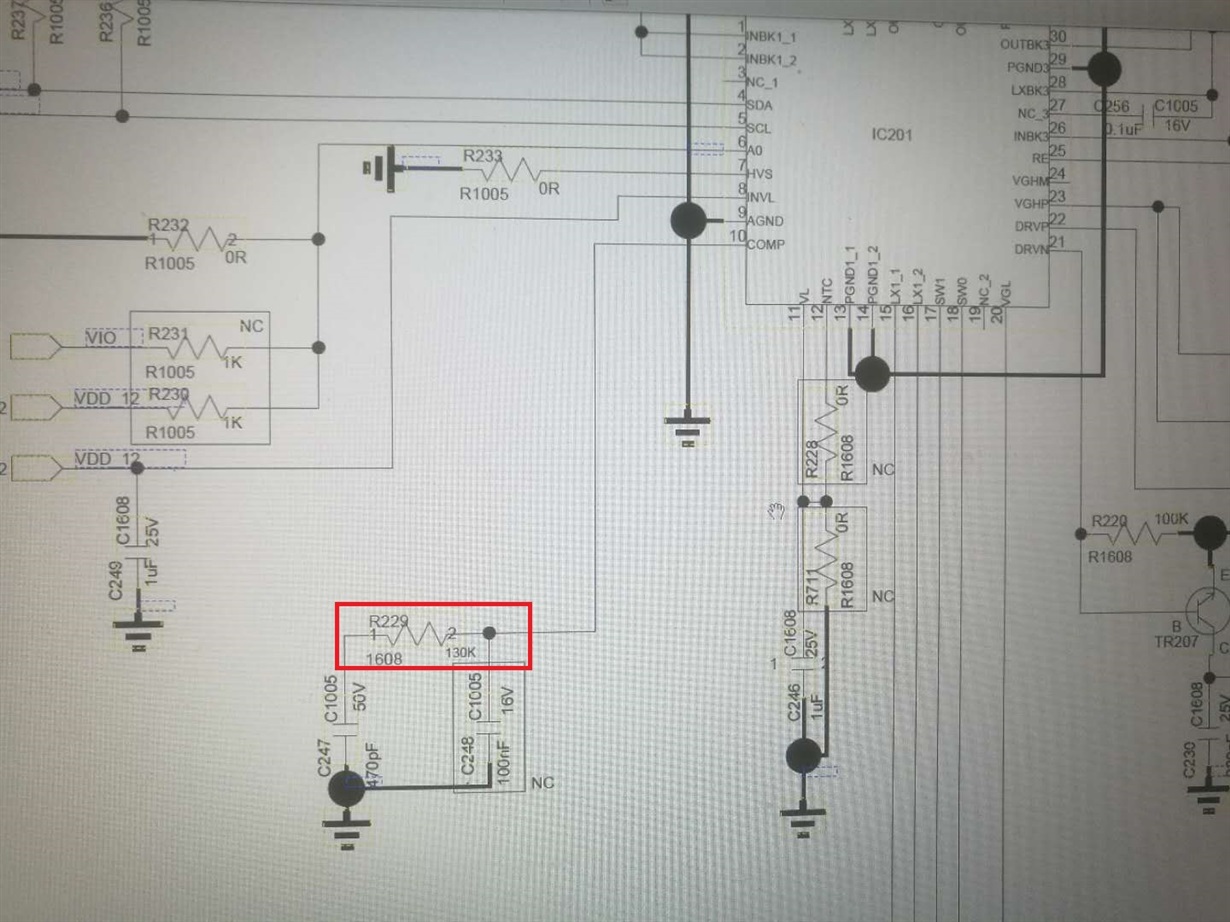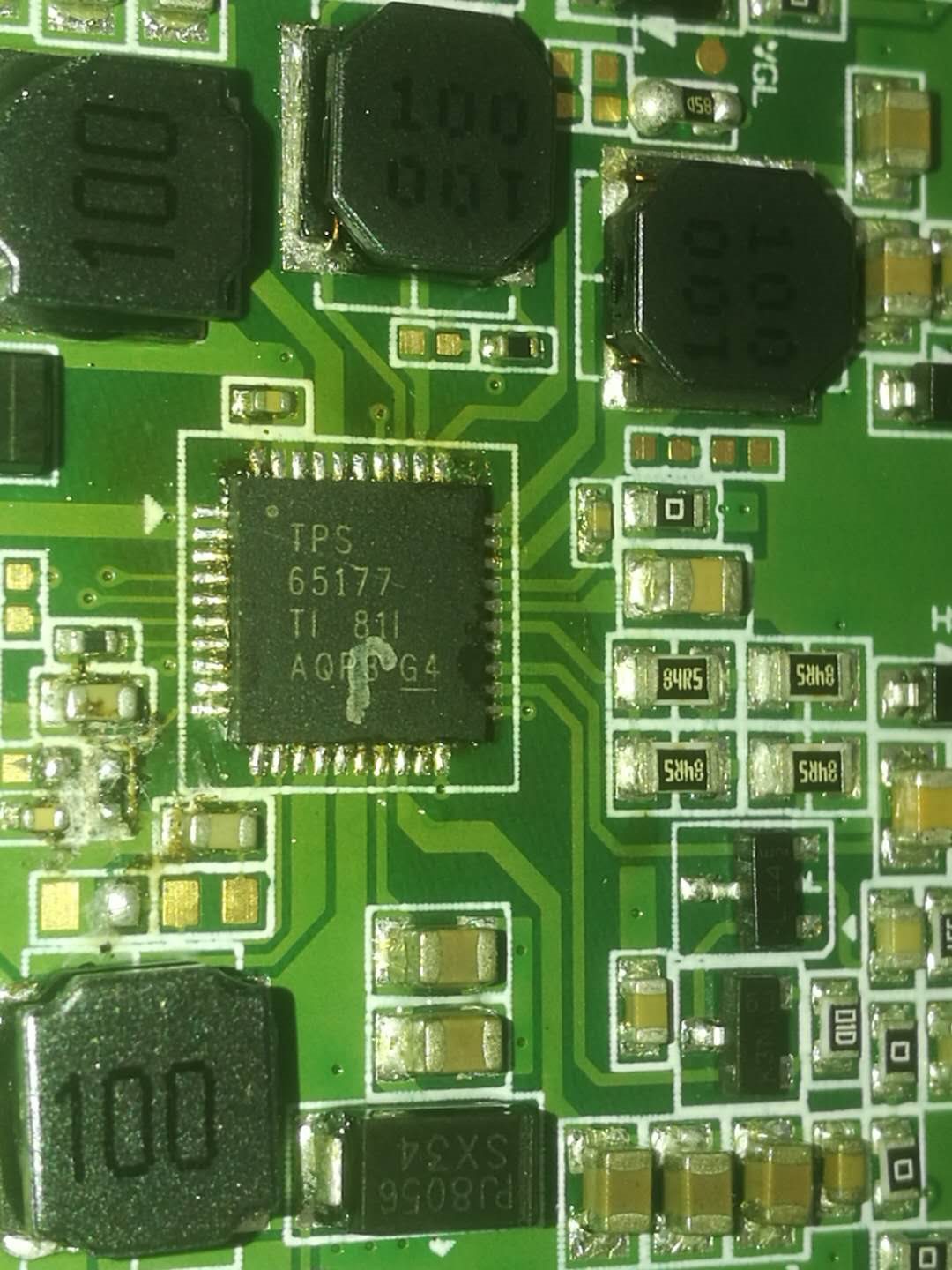Dear Team,
1.After measurement, the VGH voltage power down and the screen become black, and the duration of the screen flicker is consistent with the duration and frequency of voltage reduction, as shown in the figure.
2. The circuit that appears to be flickering is different in classic design. The R229 is 130 ohms and the recommended to be 75 ohms. If we use 200 ohms, the screen flashes earlier, the frequency rate is higher, and the probability is higher.
3. There is also a phenomenon that if a person touches the EN PIN of the chip with a dice, the screen flicker will pause.
4. We only change the IC and other conditions remain unchanged, the TPS65177 TI 81 AQP8 G4 is ERROR, but the TPS65177 53 A0XC 04 is ok.
Thank you for your reply.






